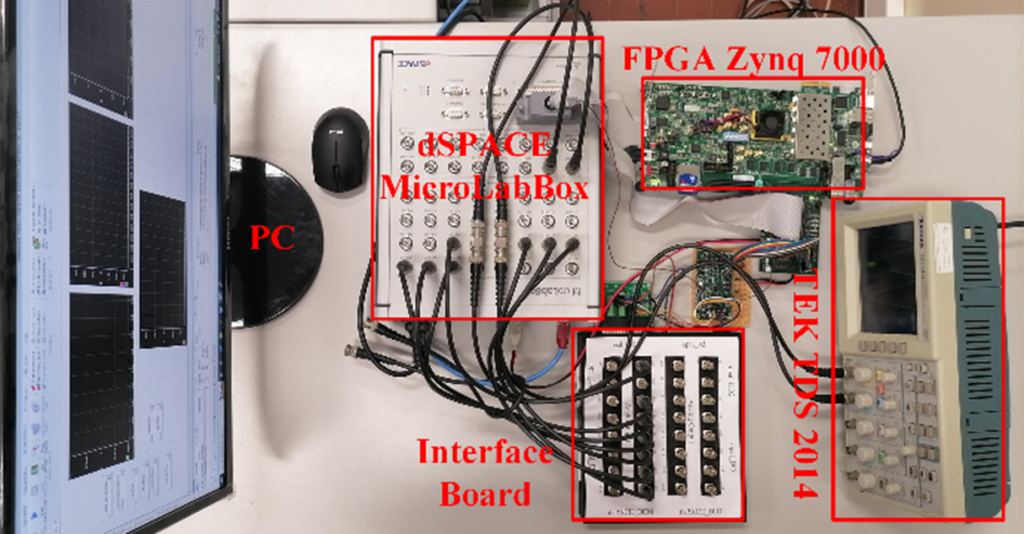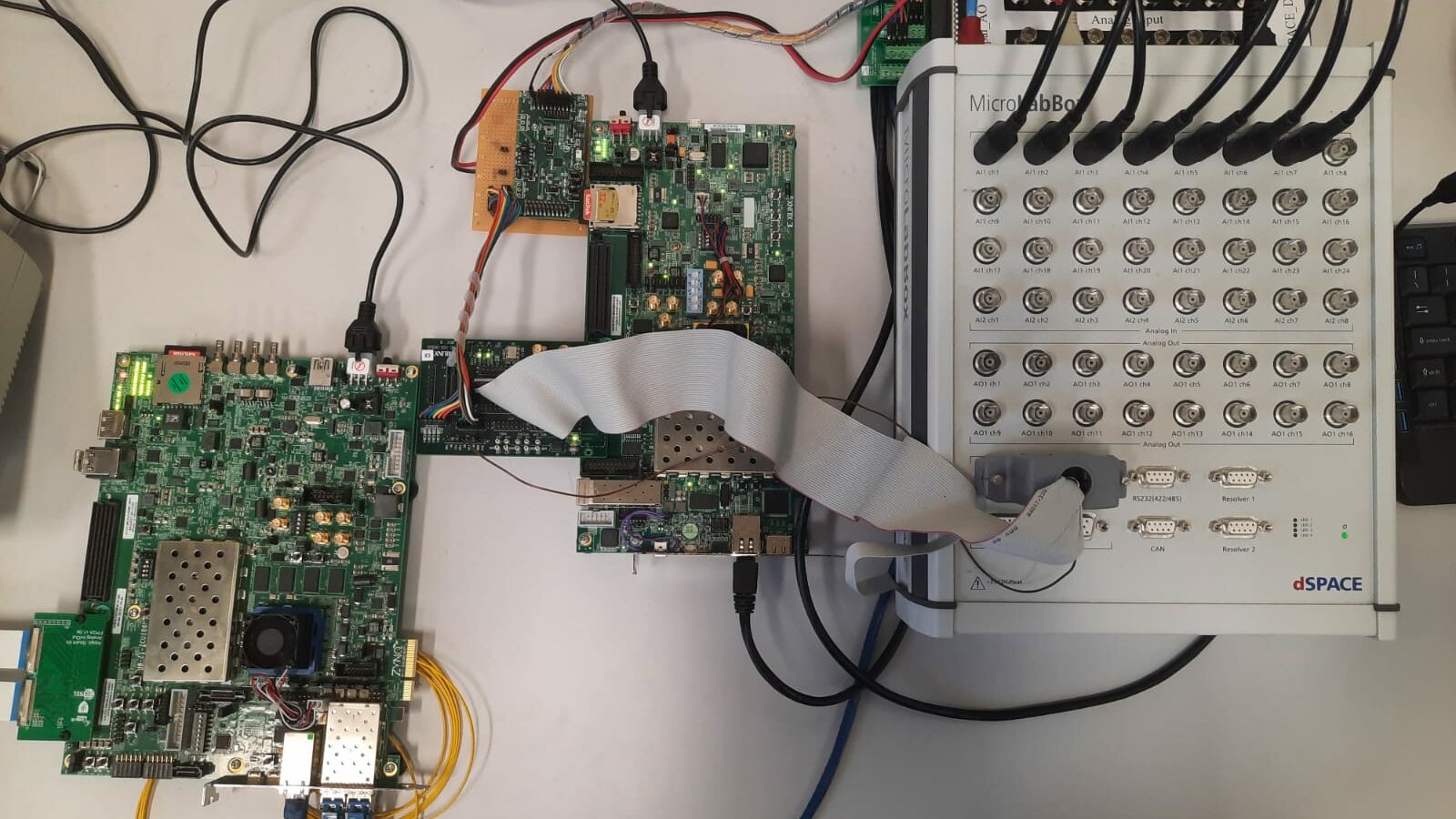High-Frequency Transformer
The development of high-frequency transformers involves the study of different materials that are suitable to be operated at higher frequencies without a substantial increase in magnetic losses. A single planar transformer was designed and tested with a power rating of 3KVA. The windings of the planar transformer are done using Printed Circuit Boards. The resulting high power density design creates challenges in parasitic components minimization and thermal management.

Preliminary testing validated the design and sizing concepts which have further developed into the design of a higher power three phase version of the planar transformer.
Design of a SiC MOSFET Matrix Converter
The development of a high power density solid state transformer triggered the development of a high-efficiency SiC-MOSFET Matrix Converter. A prototype converter was designed for the a total power of 15kVA. The resulting design is shown in the figure bellow.

The prototype is currently on the production stage
Control of a Hybrid Distribution Transformer
A novel topology for four leg matrix converter based hybrid transformer was developed with the goal of providing power quality improvements in grids with unbalanced loads. A combination of a non-linear controller combined with a model predictive controller was developed to mitigate power quaility issues such as reducing voltage harmonic current, providing dynamic voltage restoration and controlling the input power factor in an unbalanced three phase grid.

A scaled prototype was developed for laboratorial setup to demonstrate the potential and validity of the proposed topology and controllers. As an example the figure below shows the downstream mitigation of voltage harmonics.

Microgrid Stability Analysis
Microgrids can contribute to improve energy efficiency and include distributed energy from renewable energy sources. Stability analysis is a major challenge of microgrids operation control.
A Microgrid was designed and subjected to several disturbances such as connection of loads and component failures, and non-linear controllers were developed to make all state variables recover from the aforementioned disturbances in a fast and safe way.
Analysis and Control of Modular Matrix Converter Topologies
A novel modular matrix converter topology for smart transformers is proposed and the different modulation methods are fully investigated. The idea of modularity is adopted to obtain smart transformers. Compared to topologies using full bridge, less switches are used in the proposed topology. Three different kinds of modulation methods are investigated. It is found that the different switching sequences will influence the input filter capacitor voltages even if they are based on the same half-Venturini modulation method.


Moreover, a proper modulation is recommended for implementation since with this kind of modulation, the capacitor voltages can be balanced benefit to smoothing output current. Based on the analysis, proper modulations are recommended for the proposed topology. In order to verify the feasibility of the proposed topology as well as the correctness of the analysis on modulations, simulations and hardware-in-loop experiments are carried out.

Smart Transformer Modelling
Smart Transformers (ST) such as Solid-State Transformers uses power electronics and high-frequency transformers to enable bidirectional power flow and improve power quality by controlling input currents and output voltages.

Three-Stage Solid State Transformer topology
A new approach for modelling a ST was developed in order to faster simulate large scale power systems, alongside with a new type of controllers based on Lyapunov stability theory that improved its dynamic performance.

